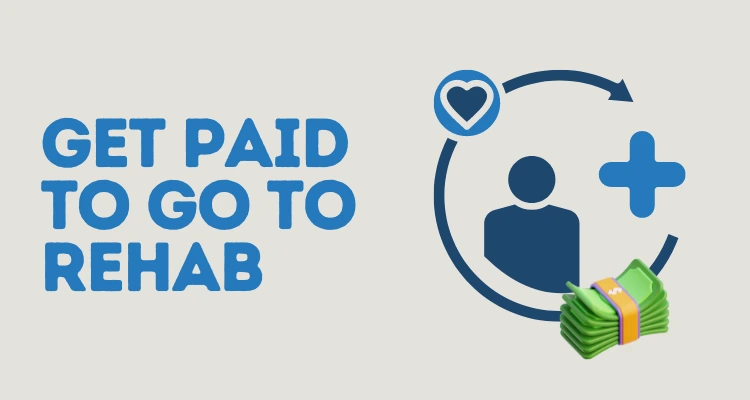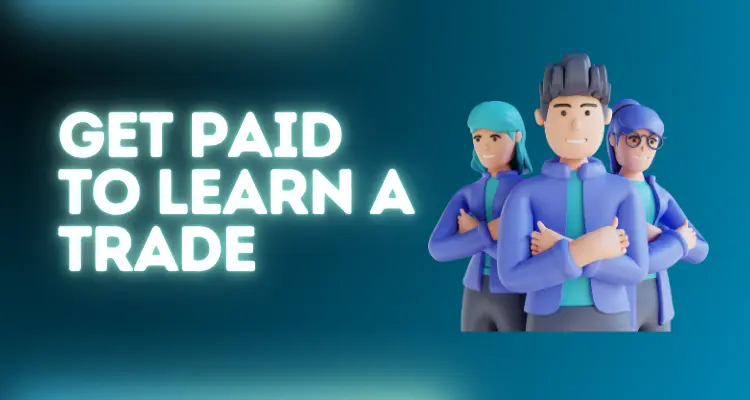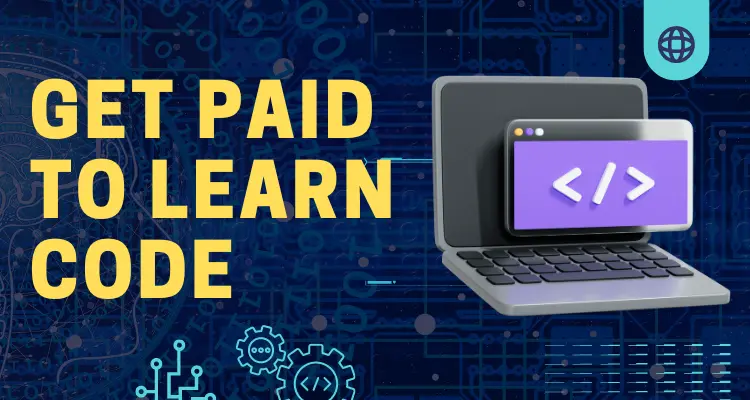What if you could get paid to learn? Sounds too good to be true, right? But in this era of constant change, it’s not just possible—it’s happening all around us. Many people are now finding ways to earn money while picking up new skills.
Imagine learning a new language, mastering digital marketing, or diving into coding—all while getting paid! It’s a smart way to grow both your wallet and your mind. And the best part? You don’t need to wait to start.
In this article, we’ll explore 10 different ways to start earning while learning. From online courses that pay you back to jobs that offer training on the clock, there’s something for everyone. So, let’s dive in and discover how you can get paid to learn and grow in exciting new ways!
Table of Contents
ToggleWhat Does it Mean to “Get Paid to Learn”?
“Get paid to learn” means earning money while you gain new skills. Instead of paying for a course, you are compensated as you train. This concept is becoming more popular as companies invest in growing talent from within. They offer paid internships, apprenticeships, or jobs with training included.
Many people think you need to spend a lot or have a degree to start, but that’s not true. Many industries offer ways to “earn while you learn” with little to no upfront cost. In tech, companies often provide training for entry-level roles. Healthcare offers paid apprenticeships, while digital marketing firms may pay for certifications. Even trades like plumbing or carpentry have paid programs where you earn as you learn.
The trend is growing fast. Businesses see the value in training employees rather than hiring externally. It’s a smart move that saves money and ensures employees have the exact skills needed. Plus, these opportunities are flexible—you can often learn at your own pace or online.
Benefits of Getting Paid to Learn
 Pin
Pin
There are many benefits to getting paid to learn. One of the biggest is building skills while earning money. You don’t have to choose between making a living and learning something new. You can do both at the same time. This means you gain valuable experience without giving up your paycheck.
Another major advantage is avoiding student debt: Many people borrow money to pay for education, but “earn as you learn” programs help you skip this step. Instead of paying for courses, you get paid to learn them. This is a smart way to grow your skills without taking on a financial burden.
Gaining hands-on experience is another plus: In a classroom, you might learn theories and concepts. But when you get paid to learn, you perform real-world tasks. You learn by doing, which often sticks better than just reading or listening.
Long-term career growth is another key benefit: When you “earn while you learn,” you’re not just gaining skills for today. You’re setting yourself up for a better future. Employers love candidates with a proven track record of learning on the job. This can lead to promotions, new opportunities, and higher earning potential down the line.
Networking is another perk: Being in a paid learning program or apprenticeship means you meet people in your field. These connections can open doors to future jobs or projects. It’s like building a support system that helps you grow throughout your career.
Additionally, you transition faster into the workforce. Traditional education can take years, but paid learning programs often fast-track you. You start working sooner, build experience quicker, and earn money right away. This gives you a head start compared to those who spend years in school.
10 Ways to Get Paid to Learn
Method 1: Apprenticeships
Apprenticeships are a great way to get paid to learn. They combine on-the-job training with classroom instruction. This means you earn a salary while learning a trade or skill. You can find apprenticeships in many fields, like manufacturing, construction, technology, and healthcare.
These programs are designed to help you gain hands-on experience. You work with skilled professionals, learn directly from them, and get paid while you train. This approach makes it easier to learn complex skills, like plumbing, coding, or electrical work. It’s perfect for those who want to jump right into a career without spending years in school.
To find apprenticeship opportunities, check out resources like the U.S. Department of Labor’s apprenticeship website or local trade unions.
Online platforms like Apprenticeship.gov or Indeed also list various programs. Apprenticeships are a great way to “get paid through apprenticeships” and achieve paid skill development in many industries.
Method 2: Paid Internships
Paid internships offer another way to get paid to learn. Unlike unpaid internships, these roles compensate you for your time while you gain practical experience. They’re common in fields like marketing, tech, finance, and healthcare. Companies often use paid internships to train future employees, so you get a foot in the door.
Paid internships allow you to work on real projects, learn industry-specific skills, and make valuable connections. You can develop skills like data analysis, content creation, or project management, depending on the industry. Plus, having a paid internship on your resume shows future employers that you already have some experience.
To find paid internships, visit job boards like LinkedIn, Glassdoor, or Indeed. Websites like Internships.com and WayUp specialize in listing opportunities specifically for students and recent graduates. So, if you’re looking to earn as you learn, paid internships are a great starting point.
Method 3: Online Courses with Financial Incentives
Many online platforms now offer ways to get paid to learn. Websites like Alison and Udemy sometimes provide financial incentives, such as scholarships or grants, to encourage learners. Some courses may offer a certification that boosts your resume and increases earning potential.
Certain programs even pay you back as you complete courses. For example, companies might offer to cover the cost if you pass with good grades or complete specific training modules. Additionally, some platforms have affiliate programs where you can earn by sharing courses with others. You take the course, learn valuable skills, and get paid when people sign up using your referral.
By exploring online learning platforms, you can find opportunities to earn while learning. Look for courses with grants, scholarships, or payment incentives. It’s a simple way to boost your knowledge and your bank balance at the same time.
Method 4: Tutoring or Teaching While Learning
Another way to get paid to learn is by tutoring or teaching others. As you study a subject, you can tutor students who need help in that area. Teaching can reinforce what you’re learning, deepen your understanding, and earn you money.
Platforms like VIPKid or Preply offer opportunities to teach English or other subjects to students worldwide. You can also find local tutoring opportunities through community centers or schools. You learn and solidify your knowledge by teaching, and you get paid for your time.
Tutoring while learning keeps your skills sharp and builds your confidence. Plus, it’s a flexible way to make money, allowing you to set your hours and rates. It’s a win-win situation where both you and your students benefit.
Method 5: Get Paid to Learn Coding with Bootcamps
Coding bootcamps are a fantastic way to get paid to learn programming. These intensive programs teach you the skills needed for a tech job in a short time. Some bootcamps, like General Assembly or Le Wagon, offer scholarships, stipends, or income share agreements, so you pay after you land a job.
Many bootcamps also partner with companies to provide paid internships or job placements after graduation. This means you start earning soon after completing the program. If you want to dive into the tech world without a big upfront cost, a coding bootcamp is a great option.
Look for programs that align with your learning goals and offer financial aid or job guarantees. It’s a smart way to break into a high-paying field and get paid to learn the skills you need.
Method 6: Trade Schools with Stipends
Trade schools are another great way to get paid to learn. They offer vocational training for hands-on jobs like electricians, plumbers, and mechanics. Many trade schools provide stipends or funding options to help cover your living expenses while you learn.
These programs are designed to fill high-demand roles, so they often come with financial support. For example, some trade schools partner with local businesses to provide paid internships or apprenticeships as part of the training. This means you can start earning while you’re still in school.
If you’re interested in a practical career with good job prospects, consider trade schools that offer stipends or financial aid. You’ll learn valuable skills, avoid large student loans, and start earning quickly.
Method 7: Scholarships for Skill-Based Courses
Scholarships are a great way to get paid to learn without dipping into your savings. Many organizations offer scholarships specifically for skill-based courses. These scholarships often cover tuition and sometimes even living expenses.
Websites like FastWeb and Scholarships.com list numerous scholarships for various fields. Some are provided by industry groups, nonprofits, or local businesses looking to support new talent. By applying for these scholarships, you can learn new skills for free and even get some of your expenses covered.
If you want to grow your skills without the financial stress, look for scholarships tailored to the skills you want to learn. It’s a great way to advance your education and career without the debt.
Method 8: Corporate Training Programs
Many companies offer corporate training programs that pay you to learn. They invest in their employees by funding courses, workshops, and certifications relevant to the job. This is common in industries like healthcare, tech, and engineering, where staying updated with the latest skills is essential.
Employers might cover the costs of certifications in areas like project management, software development, or nursing. Some companies even offer bonuses or promotions for employees who complete specific training programs. It’s a win-win: you get paid while you gain new skills, and the company benefits from having a more skilled workforce.
Method 9: Teaching English Abroad
Teaching English abroad is a fantastic way to get paid to learn. You earn money while gaining valuable experience and immersing yourself in a new culture. Countries like Japan, South Korea, and Spain have a high demand for English teachers and often provide competitive salaries, housing, and other benefits.
Most programs don’t require teaching experience—just a good grasp of English and, often, a TEFL (Teaching English as a Foreign Language) certificate. While you teach, you also learn a lot about the local culture, language, and customs. It’s a unique opportunity to explore a new place, meet new people, and build your resume.
If you want to earn while learning in a new environment, check out programs like JET in Japan or TEFL jobs in Europe and Asia. It’s a great way to see the world and get paid to learn every day.
Method 10: Join a Learning-Based Gig Economy Platform
Learning-based gig platforms like TaskRabbit, Fiverr, or Upwork offer another way to get paid to learn. These platforms connect you with clients who need various services—everything from graphic design to content writing to social media management. You can take on projects that align with your interests or skills you want to learn.
As you complete gigs, you learn by doing, get real feedback, and earn money. You can start small with simple tasks and gradually take on more complex projects as you gain confidence. The gig economy offers flexibility—you decide when and what you want to work on.
Platforms like these let you “earn while you learn” at your own pace. It’s a practical way to develop new skills, build a portfolio, and get paid at the same time.
Tips for Succeeding in a “Get Paid to Learn” Program
 Pin
Pin
Here are some practical tips to help you succeed in any “get paid to learn” program.
1. Choose the Right Program for You
Start by finding a program that matches your interests and career goals. Research different opportunities—apprenticeships, internships, bootcamps, or corporate training programs—and consider what skills you want to gain. Look into the program details: Does it offer hands-on experience? Does it align with your long-term career plans? Make sure it fits your schedule and any financial needs you may have. Remember, not every opportunity is the right one for you, so choose wisely.
2. Master Time Management
Balancing work and learning can be challenging, so good time management is essential. Create a schedule that divides your time between learning new skills and fulfilling job responsibilities. Use tools like calendars, task managers, or productivity apps to keep track of deadlines and goals. Prioritize tasks by importance and due dates. Avoid multitasking; focus on one thing at a time for better quality work. Remember to set aside some time for breaks and relaxation to avoid burnout.
3. Stay Proactive and Engaged
Don’t just go through the motions—be an active learner. Ask questions, seek feedback, and show enthusiasm for the tasks you’re assigned. Take the initiative to go beyond what is required, like researching industry trends or learning new tools that could make you more effective. Being proactive will help you stand out and make a strong impression on your mentors or employers.
4. Build Strong Relationships
Networking is key in any “earn while you learn” program. Build connections with peers, mentors, and supervisors. These relationships can provide valuable guidance, open doors to new opportunities, and create a support system for your career. Attend workshops, join group projects, and participate in discussions to build your professional network.
5. Keep a Learning Mindset
Remember, the goal is to learn while earning. Keep an open mind and embrace the learning process, even when it’s challenging. Every mistake is a chance to learn something new. Stay curious and keep updating your skills. The more you learn, the more valuable you become.
6. Balance Learning with Earning
It’s important to strike the right balance between your job duties and learning goals. Don’t get so caught up in earning that you neglect the learning part. Set clear objectives for both earning and skill development. Track your progress regularly to ensure you are on the right path.
7. Reflect and Adjust
Periodically reflect on what you’ve learned and how far you’ve come. Are you meeting your goals? What could you do differently? Use this reflection to make adjustments to your approach. Learning is an ongoing process, and being flexible will help you stay on course.
Get Paid to Learn – Concluding Thought
Getting paid to learn is a smart way to build your future. You don’t have to choose between earning money and gaining new skills. With so many options—from apprenticeships and paid internships to scholarships and online courses—you can find the perfect fit for your goals.
Now is the time to explore these opportunities. Whether you want to dive into a new career, advance in your current role, or simply learn something new, there is a program out there for you. Don’t wait for the perfect moment—start looking into these methods and take the first step.
Remember, every step you take is an investment in yourself. You’ll gain experience, build valuable connections, and boost your earning potential—all while getting paid to learn.
So, start your journey today—pick a program and begin earning while learning! If you have questions or thoughts, drop a comment below. Let’s help each other grow and succeed!
Further Reading:
- Get Paid to Learn a Trade: Earn as You Build Skills!
- Get Paid to Learn Code – Earn While You Learn
- Get Paid to Watch Netflix: Unveiling 15 Ways
- Get Paid to Read Books: These 15 Platforms Pay
- Get Paid to Sleep: 10 Options To Explore
- Get Paid to Talk to Lonely People: These 50 Sites Pays Well
- 42 Side Hustles That Pay Weekly
Get Paid to Learn – FAQ
Is it really possible to get paid to learn?
Yes, it is absolutely possible to get paid to learn! Many opportunities exist where you can earn money while gaining new skills. From apprenticeships and paid internships to scholarships, corporate training programs, and gig economy platforms, there are many ways to learn without financial burden. You can choose the path that suits your interests and career goals while getting compensated for your efforts.
Which industries offer paid learning programs?
Several industries provide opportunities to get paid to learn. The tech sector is known for offering coding bootcamps, internships, and corporate training. Healthcare has many programs like paid nursing training or medical internships. Trade industries such as plumbing, electrical work, and carpentry often provide apprenticeships with a salary. Creative fields like marketing, design, and content creation also have paid internships and freelance gigs where you can learn on the job.
What’s the difference between internships and apprenticeships?
Both internships and apprenticeships allow you to learn while working, but there are key differences. Internships are usually shorter, lasting a few months, and are often for students or recent graduates. They provide experience in a professional setting, typically without a guarantee of a job at the end. Apprenticeships are more formal and longer, often lasting 1-4 years. They provide in-depth training in a specific trade or skill and usually lead to a certification or a job offer upon completion. Apprenticeships are common in trades like construction, plumbing, and electrical work, whereas internships are found across various industries, such as tech, healthcare, and marketing.






